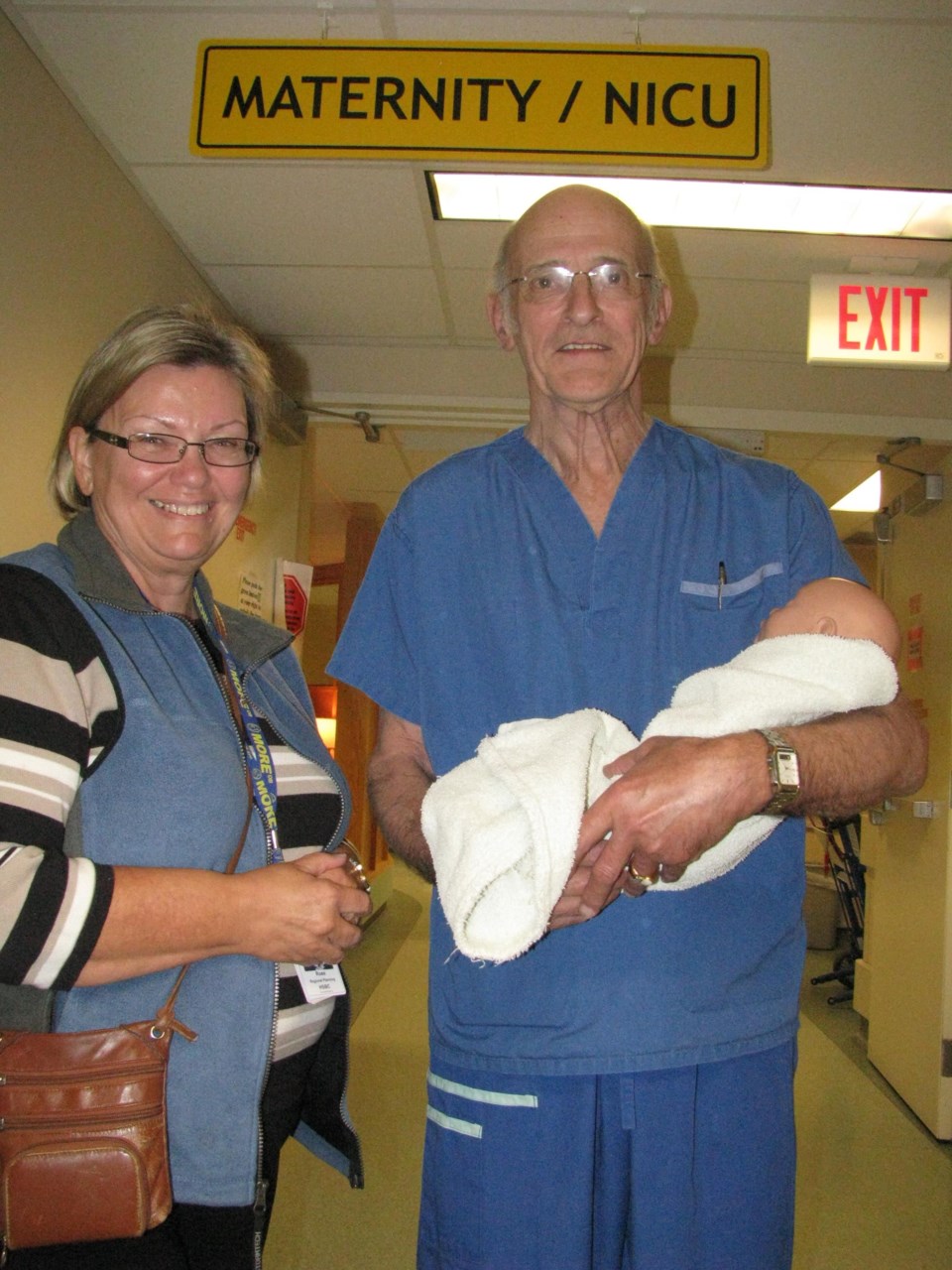Rose Perrin says expectant mothers should not be fooled, there is no such thing as painless labour.
While thought of the pain of natural childbirth strikes paralyzing fear in some women, Perrin, the executive lead of Northern Health's perinatal program, says that worry should not be enough to cause expectant moms to demand a Cesarean section.
"Labour is hard work, it's normal, and it hurts, and it's a good hurt," said Perrin the executive lead of Northern Health perinatal program.
"You see it in Hollywood media, where some folks having are elective C-sections because they don't want to go through labour. Women don't want pain and they love to share their scary labour and delivery stories with other people. Labour is a normal process and women need to realize the power they have to do this."
Northern Health has set a goal to increase the number of vaginal deliveries by two per cent by March 31, 2013. While there are cost savings if normal labour is carried out, that's not the motivating factor.
"It's all about improving patient services that they receive, putting patient safety as a priority and developing patient satisfaction as well as care-provider satisfaction -- that's what's driving the work that we are doing," said Perrin.
"We know from research if you provide a quality service and you provide patient satisfaction and care-provider satisfaction you actually will reduce costs significantly. "
In B.C., about one in every three births is by C-section. The provincial numbers rose from 5.3 per cent of all births in 1970 to 31 per cent in 2010. In the northern Health region, 27 per cent of births are by C-section. Part of the reason for the large increase over the last 40 years is women are asking for C-sections as a matter of choice.
"With the increasing autonomy of patients that's developed over the last 10 years or so you're allowed to accept it under certain circumstances," said obstetrician Dr. Brian Galliford, medical lead of Northern Health's perinatal program.
"If you have a 24-year-old with her first pregnancy who demands a section you do your very best to talk her out of that because she might have two or three kids which are going to be sections. The more sections you have, the more problems you run into."
In a C-section, one or several incisions are made in the mother's abdomen and uterus to gain access to the baby. The surgery is usually only necessary when a vaginal delivery would jeopardize the health of the baby or the mother.
A C-section requires a general anesthetic and the surgery raises the mother's risk of bleeding, infections, and blood clots in the legs and lungs. Some babies experience breathing problems after C-sections.
Another factor that has increased the C-section rate is the average birth weight of babies is larger than it was several decades ago. The half-hour procedure also allows doctors to schedule a time to deliver a baby rather than having to wait for the birthing process.
Doctors sometimes perform C-sections when dilation of the uterus stops progressing, but Galliford said the guidelines on how long those delays should be allowed to proceed are based on studies made 50 years ago.
"It used to be that if they hadn't dilated any further in two hours, that was an arrest of labour and they were sectioned, but a recent study in the States shows that if you wait four or five hours, 60 per cent of them will deliver vaginally," Galliford said.
Through its Managing Obstetrical Risk Efficiently (MORE) obstetric program, which began in 2006, Northern Health's mandate is to standardize perinatal care practice and education and provide services to mothers from conception to six weeks postpartum and to infants up to 29 days after they are born.
To reach its goal of a two per cent increase in vaginal births, Northern Health is drawing on the expertise of 350 medical experts, including midwives, general practitioners, obstetricians and nurses, to examine what works and what doesn't in perinatal care. They offer labour support while examining the impact of care-providers on women and their families during the birthing process.
Providing prenatal education, especially in the first six or eight months of pregnancy, to try to ally the fear of childbirth is also key. The strategy also involves connecting with not-for-profit community groups like Healthiest Babies Possible, Pregnancy Outreach and the Aboriginal Health Association to get more care-providers working together to support families during childbearing years.



